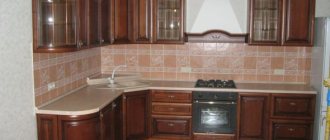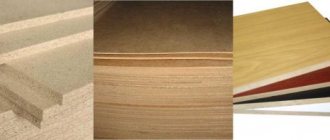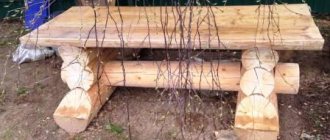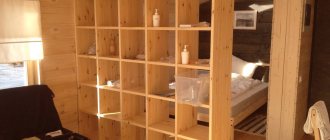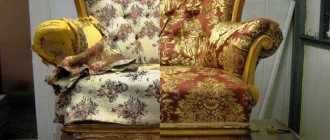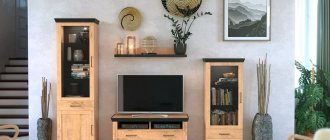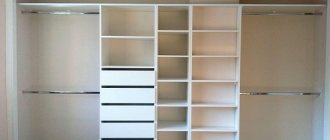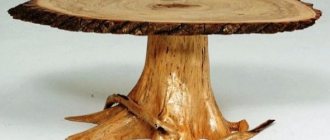A furniture jig is a simple mechanical device that serves to speed up and simplify the actions when drilling holes. The use of this device allows you to create technological holes without pre-applied markings and do this with perfect accuracy, as well as a adjusted slope. The device is indispensable during the assembly of furniture structures and carpentry work. For use in everyday life and in small-scale production, it is very easy to make a furniture jig with your own hands.
What is it and its purpose
In essence, a furniture jig is an ordinary template with holes of the required diameter. The working part of the device is a rectangular block of solid material with holes located according to the required markings. For convenience, it can be equipped with adjusting and locking mechanisms. Based on the simplicity of the design, you can quickly make stencils for furniture with your own hands using available materials.
The jig ensures the desired direction of the drill at an angle of 90 degrees to the surface, eliminating the possibility of deviation. This is especially important when working with narrow parts of furniture, such as the ends of walls or doors. Without this device, it is quite difficult to maintain the required angle, which can lead to defects, because even a slight deviation in the direction of the mounting hole can make it impossible to assemble individual elements into a single structure.
For the perfect fit of furniture elements to each other, the accuracy of the location of the holes for fasteners is also of great importance. Those who make furniture with their own hands are often faced with the need to create a number of identical holes at a certain distance from each other. To make the work easier, make it faster, it’s easier not to mark up every time, but to use a template.
Using the jig you can work with different furniture materials: wood, chipboard, MDF.
Description
A furniture jig is a special template tool that is often used by specialists in small and large enterprises to mark drilling points on products and, in some cases, also ensures that the drill fits straight into the material. Depending on the needs of the master, conductors can be either factory-made or self-made. Most often they take the form of a metal template with sleeves for the hole and marking the distance between them. The main advantage of using a furniture jig is that specialists spend less time taking measurements and making markings for drilling.
Using it, you can quickly mark the necessary points on the product blanks, and then make their high-quality connection using different fastening methods. The scope of its application is quite wide, but most often it is used for quick insertion of standard furniture hinges. The device may vary in appearance and markings on the template depending on its intended purpose and operating conditions. For example, a jig for furniture hinges in the production of doors will differ significantly in appearance from a jig that is used to fasten massive furniture doors.
Selecting a model for production
Conductors of industrial production can be highly specialized and universal. Templates of the first type are used to perform certain operations on typical parts. Universal devices are suitable for working with different materials and objects of various configurations.
Based on design features and functionality, conductors are divided into the following types:
- overhead - when used, they are applied to the surface in the desired area, fixed with clamps or held by hand. Used for drilling holes in flat parts;
- rotary - the working part moves in both vertical and horizontal planes. Used when working with elements of complex geometric shapes and to create holes, the axis of which must be located at an angle;
- tipping - used to create holes in perpendicular planes.
A marking jig is used to mark the locations for drilling holes. It is much thinner and lighter.
The conductor device can be specially created for a certain type of fastener: dowels, confirmations, screws, corners. There are devices to simplify the process of installing fittings.
According to the type of fixation, furniture jigs can be sliding or fixed. The former can be moved freely over the surface if necessary, while the latter are rigidly fixed in the right place. The presence of an adjustment mechanism will help to combine the device with different types of workpieces.
For large furniture manufacturers, the availability of a variety of additional accessories plays a decisive role, since they significantly reduce time costs. In this case, the cost of the tools does not matter much. A completely different approach to purchasing the necessary equipment from those who have a small furniture production facility or from independent craftsmen who produce certain types of furniture. In this case, making furniture templates with your own hands turns out to be much cheaper and more practical. The choice of the necessary options and the complexity of the device are determined not only by production needs, but also by the skill and experience of furniture manufacturers.
Overhead
Turning
Universal
Materials and tools
To manufacture a device, you must first decide on the tasks that it will perform. Accordingly, the necessary material is selected from which the furniture template will be made with your own hands. The most durable, reliable and “long-lasting” is considered to be a metal conductor. To create a furniture jig for drilling with your own hands, it is permissible to use wood, plywood, textolite, and plexiglass. This is due to lower labor costs and cheaper materials. All this is important, especially if you are going to make several different templates yourself.
To make a conductor, a piece of reinforcement, a block or a plate is suitable - something that can probably be found in any garage or home workshop. To make a simple marking device, you can take a regular school ruler - wooden, plastic or metal.
Of decisive importance in the manufacture of the jig is the accurate calculation of the location of the holes on the workpiece. You can take a ready-made diagram or make it yourself. The latter option is preferable, since the dimensions in the drawings must correspond to the tasks being solved.
Tools you will need:
- drill;
- grinder or jigsaw;
- a set of locksmith tools;
- clamps;
- vice.
When manufacturing a jig, you will need perfectly accurate drilling of guide holes and hardening of the finished device
Drawing of a homemade conductor for drilling holes for confirmations
Dimensions
The dimensions of the fittings depend on its purpose. The material from which the corner is made and the recommended load also play an important role. The largest parts are considered to be reshaped parts, equipped with an additional hole for a hex bolt.
What are furniture confirmations, advantages and disadvantages
| Mounting type | Dimensions |
| For light connections (furniture corner for fastening shelves) | 40 × 40 × 20 |
| Angular | 40 × 40 × 60 |
| Reinforced | 60 × 60 × 80 |
| With locknut | 100 × 100 × 100 |
Amateur craftsmen rarely use reinforced corners; this type of fittings is usually needed by construction professionals. If the structure has a specific shape and design, such fasteners are made to order. Sometimes inexperienced craftsmen make the mistake of using reinforced corners to attach standard bookshelves. This will not affect the life of the furniture in any way, but such elements will cost much more, so there is no point in overpaying.
The most common and inexpensive type of fittings is for light connections. Such corners 2 mm thick will be quite enough to fix the shelf if there are no heavy objects on it. This variety is often used when installing open shelving in a living room or nursery.
Angles with a lock nut usually have perforation - local or over the entire surface; accordingly, the dimensions of products of this type may vary.
For light connections
Angular
Reinforced
With locknut
Manufacturing stages
Let's consider the process of creating a metal conductor device for confirmations. This fastener is most often used when assembling furniture:
- A piece of the required length is cut from a square metal block (10x10 mm) using a grinder. The ends of the resulting segment are leveled and cleared of burrs using a file. Corners and edges can be rounded for ease and safety of use;
- The hole locations are marked on the workpiece. Their centers should be located at a distance of 8 mm from the side edge (the thickness of the chipboard sheet is 16 mm). There should be 32 mm from the end and between the holes, in accordance with the generally accepted system of furniture fastenings. For marking, you can use a carpenter's angle or caliper. It is better to make marks on the part using a sharp metal object - an awl or a large needle. You can use a core and a hammer to make holes for the initial installation of the drill. When drilling holes, it is important to prevent the drill from moving and make them strictly perpendicular to the surface of the workpiece;
- use a drill with a diameter of 5 mm to make holes;
- to create a stop, you need to cut a piece of the required length from a metal plate (1x25 mm);
- sand the edges with sandpaper;
- bend the workpiece at a right angle, holding it in a vice. Fold the parts, aligning them coaxially;
- fasten the parts in this position using a clamp;
- From the side of the plate along the length of the device and at the end, drill holes corresponding to the size of the screw. Cut threads and fasten parts;
- Cut off the excess thrust plate and process the edges.
Tools you will need to make furniture
Assembling and manufacturing furniture products is a creative and exciting process. But in order for it to bring only positive emotions, it is necessary to prepare the necessary equipment in advance.
If you don’t have your own tools, you can borrow them from friends or rent them. The set for a beginner may be minimal, but chosen correctly. Among the wide variety of useful devices, you should definitely take devices for screwing, drilling and trimming. You should also prepare measuring instruments.
To assemble cabinet furniture with your own hands you will need:
- Drill.
- Jigsaw.
- Grinding machine.
- Screwdriver.
In this case, it is allowed to take both electric and hand tools. In the first case, it can operate from the network or from an autonomous power source - a battery.
If you need to create complex projects, the range of devices can be expanded.
Screwdriver
A key tool for a furniture assembler is a screwdriver. It is intended for screwing in fasteners and fixing fittings. Often, craftsmen replace it with an electric drill, but this is accompanied by some discomfort, since you will be limited in movements by the length of the wire. Even when using a drill, you need to constantly change attachments and bits. A good screwdriver will be an essential element for furniture making.
If you are going to assemble one chair or wardrobe, then it is enough to find a budget device. But when performing complex work or developing a private business, it is better to purchase professional equipment from leading brands. Its cost may be high, but this is justified by its advanced functionality and operational advantages.
There are a number of indicators by which you need to choose a screwdriver for furniture assembly:
- Good charging block. Low-quality chargers that guarantee fast charging negatively affect the condition of the device and can lead to damage. A normal cycle lasts 6-8 hours.
- Supports 8 power modes and drilling options.
- Quite heavy, but ergonomic body.
- Smooth running and quick fixation of the working element.
Hex key for confirmation
A novice master needs to prepare a hex key for confirmation. Then it can be replaced with a special bit for a screwdriver.
Screwdriver
It is recommended to choose reversible screwdrivers with removable bits. They will be effective both when assembling furniture and when performing other household tasks. It is better not to save on this tool, but to immediately buy a high-quality model.
When choosing a screwdriver, you should consider that the most important thing about it is the quality of the bits.
Drill
Drills for furniture production must have the following diameter:
- 4.5 mm.
- 7.5 mm.
- 10 mm.
Grinder
An indispensable part of furniture making equipment is a grinding machine. It is used to clean and level surfaces or cut lines. The device also removes varnish, old paint residues or other substances before applying paints and varnishes.
Confirm drill
Such a drill has a specific shape and an expanded diameter from 5 to 8 mm. This allows him to simultaneously create two holes for a Euroscrew with a countersink for the head. With this drill you can:
- Make holes for the confirmation with dimensions of 5 mm.
- Create larger holes using additional notches to prevent chipboard tearing.
- Countersink the holes for the cap so that it blends into the chipboard.
Forstner drill
For private furniture production, you need to find a Forstner drill, the diameter of which is 15 cm. The element allows you to create holes for mounting rasteks and minifixes, maintaining mathematical accuracy.
The key advantage of the tool is the presence of teeth that prevent deviation from the specified cutting pattern. As a result, the hole becomes clean and the hinge cup is fixed tightly and evenly.
The disadvantage of a drill when processing wooden surfaces is its low quality. However, products from leading manufacturers are free from such problems and are sold with a guarantee.
You need to choose a milling element in a special store. At such retail outlets, standard and non-standard drills with certification and quality assurance are available. Cheap devices are ineffective, so it is better to give preference to models with an average market price. They will last longer and perform better.
Drill bit for furniture hinges
To insert furniture hinges, you will need drills with a diameter of 26 mm. With their help you can create a suitable recess for the hinge.
Confirmation bat
The attachment for confirmations will be useful when installing cabinet furniture. It resembles a “manual” hexagon and is an indispensable element in carpentry tools.
Awl
An awl is used to make nicks before drilling. It ensures even drilling and prevents the drill from slipping.
Pencil
The device is required for marking and other tasks. It is recommended to use a pencil with medium hardness.
Roulette
When choosing a tape measure, you should give preference to models with a narrow blade. The optimal length should not exceed 3 m, since more is not required.
Square
The product is used when marking fiberboard and chipboard and maintaining an angle of 90 degrees when fixing perpendicular fasteners.
Sandpaper
Sandpaper should be fine-grained. Its task is to grind sharp edges in the end part of a chipboard board or remove corners in MDF facade structures.
